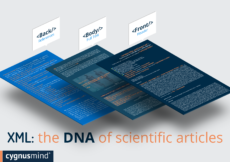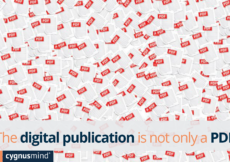www.cygnusmind.com
ePUB: The native digital format which scientific journals ignore – CygnusMind´s Blog
by Cygnusmind.com
ARTICLE
When we talk about Internet in the academic and scientific publications, we are referring to their transitions through the digital world. We think about “natural” languages which are operated traditionally in the Web. It is here when we think of two basics: HMTL and XML. Paradoxically, these two languages are less used in the scientific journals in Latin America-, specifically those where the common digital publishing platform used is the Open Journal System.
The ePUB, as an acronym of Electronic Publication, is a responsible, resizable, readjustable, format of Open Source Code which allows to read texts, images and audio. The e PUB3 format was adopted by the International Digital Publishing Forum in 2011. Two year after, in 2013, it was taking as the standard format by the International Publishers Association.
One of the greatest advantages of the ePUB format is the portability and its responsible nature, it is to say, it can be read and utilized in any digital platform or device: personal computer, tablet or smartphone. The adaptability and assurance of its current use preserve this digital reading option for any technological platform for the future. Furthermore, due to portability, it may you to download in low size and offers you offline reading which turn it into a great promise for the scientific communication.
Behind the ePUB format exists a structure of information that could be founded as well as in XML format. Even, the standard tagging scientific articles in JATS such as well as XML allow to generate automatically the articles in ePUB format. Subsequently, the ePUB results a well reading format naturally for the scientific tagging XML JATS.
Those features make it one of the most useful formats for scientific literature reading.
If you are planning for making an ePUB, regardless of content, you must ask yourself if you comply with the following elements:
- Logical framework and a suitable professional interface surfing site.
- Consistent styles – it must exist a clearly difference and a hierarchy in the typography along the text –. [A consistent use and a correct hierarchy in the body might help totally to achieve an easy reading].
- Suitable well-structured index.
- A customizable format which allows to set up time, rotation, size and type font, color and surface change, hyphenation of words.
- Appropriate and adequate metadata structure: the data must connect and inform to the user as well as allows to search engines to find the information: title, license, authors, editors, etc.
- Images must not to be clears [Is important present responsible design and when zoom is made on, the definition must remain clear].
- When you want to create an ePUB, you have to know how to exploit it: take advantage of its potentials like interactivity, video and audio addition, creation of hyperlinks to external sources of information; achieve your goal getting the whole possibilities that ePUB allows you.
- A possibility to include JavaScript for adding elements to the interactivity of ePUB nature. – with JS you will add animations, forms, and even video games –.
However, is important to point out that this format always will need a third software to be read it. iBOOKs by Apple, Inc., Kobo, Adobe Digital Editions, Nook or Aldiko by Barnes and Noble in Android systems, among others. “View” or display of the text will always have to adapt to the reading software. We emphasize that ePUB format does not obey to its features, it does rather to the third reader software.
As an Open Source format offers to everyone a huge potential for designers of reading software who will surely continue to innovate in improving features to achieve the best experience for users with ePUB text format.
We can assure you that e PUB format possesses a great potential [ as we have appreciated it in books] for communicating messages powerfully into scientific community, but, for that, publishers must give it a chance.
How to cite this article: Cygnusmind (2019). ePUB: The native digital format which scientific journals ignore. Retrieved from Cygnusmind´s Blog: https://www.cygnusmind.com/blog/en/article/epub-the-native-digital-format-which-scientific-journals-ignore/




